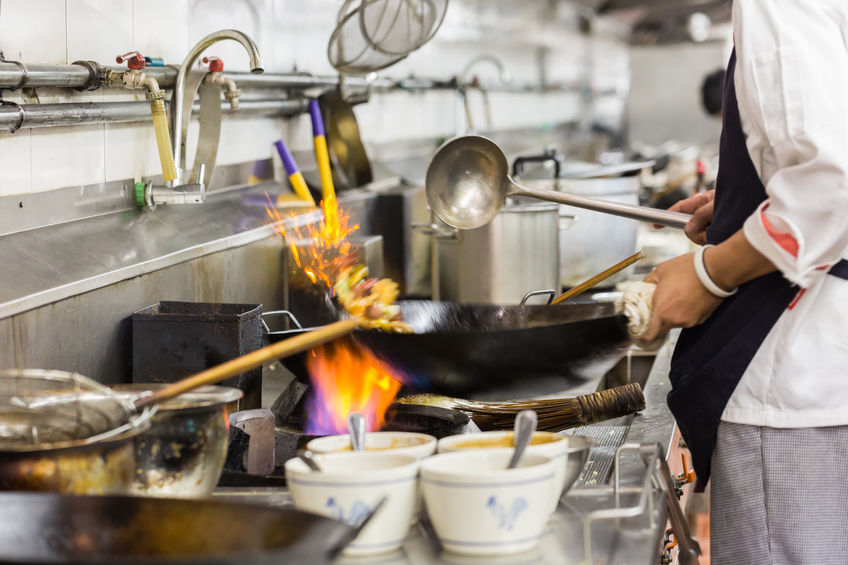Corporate video inevitably involves filming interview material, where key players discuss key aspects of their business or organisation. But however good you are at shooting talking heads, they can get tedious. To add interest and context when filming your corporate video, it’s important to use what documentary filmmakers call B-roll. This is additional footage that supports and punctuates the main action, thereby helping you to tell your story. You can see B-roll at work in the Apple recruitment video, below. In this video environmental, workforce and detail shots, are used as cutaways over talking head comments from key staff.
This post discusses tips for B-roll to help you add interest, context, and production value when filming corporate videos.
Be prepared – a little knowledge goes a long way!
Regardless of the fact that you’re filming corporate videos, your video still needs to tell a story. Your story might be about products and services, or maybe it’s about the heritage of a business. However, it’s still a story. To tell your story well, you need to understand it, which is where pre-production planning, with key players, is vital. Understanding your story and the audience it’s aimed at, helps you to plan the style and structure of your production. Holding appropriate discussions will also inform your key questions and prompts for interviews. They will also help you to create a shopping list of B-roll sequences that will help tell your story.
What’s it all about?
Depending upon the story you’re telling, there may be a whole raft of information to include. This could include information about product ranges, teams, premises, and the customers. Try to ensure that you include all of these key elements in the B-roll footage you’re filming your corporate video. Otherwise, you might be tempted to concentrate on visually exciting activities at the expense of other things. For example, if you were filming a corporate video for the NHS, you wouldn’t just shoot speeding ambulances. No matter how exciting this, it’s just a small part of what this vast and incredible organisation does.
Build relationships when filming B-roll.
Another important part of preparing to film B-roll is building relationships with those you will be filming. You need to know, for example, who might be nervous on camera, or who might give a beaming smile. Circulate, chat over coffee, ask people what it is they do or what the equipment they’re operating does; and crucially, explain why you’re filming. This way, you won’t just come over like an idiot who’s unexpectedly shoving a camera in someone’s face. While we’re on this subject, whatever you do, ask people before you start filming them; most will be obliging, some less so. In the latter case, you move on; it really isn’t your automatic right to simply invade someone else’s space and hit record.
Create visual interest when filming your corporate video B-roll.
Wildlife photographers and filmmakers often engineer some of their more effective images and movie sequences to some degree. Waiting for nature to do what they want could prove both frustrating and costly. You shouldn’t be afraid to do exactly the same thing when filming B-roll for your corporate videos. OK, Sally and John don’t actually work in sales and don’t understand the flow chart they’re discussing in your shot. But who, outside the office, would know that? The fact is that Sally and John look good on camera, aren’t at all self-conscious, and have no problem indulging in a little visual role-play, so why not?
When you’re shooting B-roll sequences, always remember that your on-screen talent can’t see your thoughts. You’ll need to direct them in terms of where to look, their facial expression, how to place their hands, etc. Don’t get too demanding, or you’ll undo all the good work you did in building relationships with them. Always remember that they’re not pro actors, so be patient and have a little fun! Most importantly, work deliberately, with your shopping list in mind, rather than simply grabbing what you can get.

Someone working at their desk makes perfect b-roll.
Create excitement if it’s not there.
If the environment you’re filming in is quite static, an architect’s studio, for example, the illusion of dynamism and movement needs to come from you. Use camera movement, dramatic angles, focus pulls, zooms, slider shots, and even time-lapse footage to spice things up. Adding a Ken Burns effect to footage in post-production may be the oldest trick in the book, but it still goes a very long way to adding visual interest.
Don’t get self-indulgent
When filming, always refer back to your first principles in terms of the style, atmosphere, and key messages that you wish to convey in your corporate video. This is another reason to establish these clearly during pre-production. Don’t perform visual tricks for their own sake, as this invariably looks cheap and nasty in the final production. Deploy your armory of production techniques sparingly. As a general rule, unless the style of production and target audience demands it, understate rather than overstating production technique. While it may be tempting to show off your skills, you shouldn’t do this at the expense of cohesion. Besides, the best video production tricks are always the ones that no one really notices.
Sometimes, what you need is already there.
Be alert to what’s happening in and around the environment you’re shooting in. The advice above might suggest leaving nothing to chance. However, there will always be interesting images to be had in a busy workplace. Even so, think creatively. Consider interesting angles, shapes, in-frame design, depth, and perspective, along with opportunities to create movement, a sense of human scale, and so on.
Take note.
During the interviews you conduct, take note of interesting stuff for potential B-roll. There might be some hidden gems that no one really thought about during pre-production discussions, or that you never got to see when touring the site.
Filming establishing footage for your corporate video.
In terms of structuring your corporate video, it can be very useful to film establishing and closing material. These act as a simple container for the main event. For example, if you’re filming for a local restaurant, you could capture footage of the exterior at twilight, a closeup of a table layout, or a closeup of a signature dish. You could then earmark these shots for the start or end of your video. It’s always a good idea to shoot establishing footage to be longer than other items of B-roll. This is because you can then use it under introductory or closing text, such as social media information, or a website address.
Learn more about my corporate video production services.
Stourbridge-based Mooma Media offers event audio-visual support, event filming, live-streaming, video production, and still photography services to businesses, the public sector, and other non-commercial organisations throughout the Black Country and the wider West Midlands region. To discuss your project, or for a competitive quote click the button below.
Stourbridge-based Mooma Media offers event audio-visual support, event filming, live-streaming, video production, and still photography services to businesses, the public sector, and other non-commercial organisations throughout the Black Country and the wider West Midlands region. To discuss your project, or for a competitive quote click the button below.
Corporate film production in and near:
West Midlands county: Birmingham, Solihull, Sutton Coldfield, West Bromwich, Dudley, Walsall, Wolverhampton.
Staffordshire: Lichfield, Tamworth, Stafford, Cannock,Burton upon Trent.
Shropshire: Telford, Shrewsbury, Bridgnorth, Kidderminster, Ludlow.
Worcestershire: Bromsgrove, Reditch, Droitwich, Worcester,
Warwickshire: Warwick, Stratford upon Avon, Leamington Spa, Coventry, Nuneaton,
West Midlands county: Birmingham, Solihull, Sutton Coldfield, West Bromwich, Dudley, Walsall, Wolverhampton.
Staffordshire: Lichfield, Tamworth, Stafford, Cannock,Burton upon Trent.
Shropshire: Telford, Shrewsbury, Bridgnorth, Kidderminster, Ludlow.
Worcestershire: Bromsgrove, Reditch, Droitwich, Worcester,
Warwickshire: Warwick, Stratford upon Avon, Leamington Spa, Coventry, Nuneaton,


Comments are closed